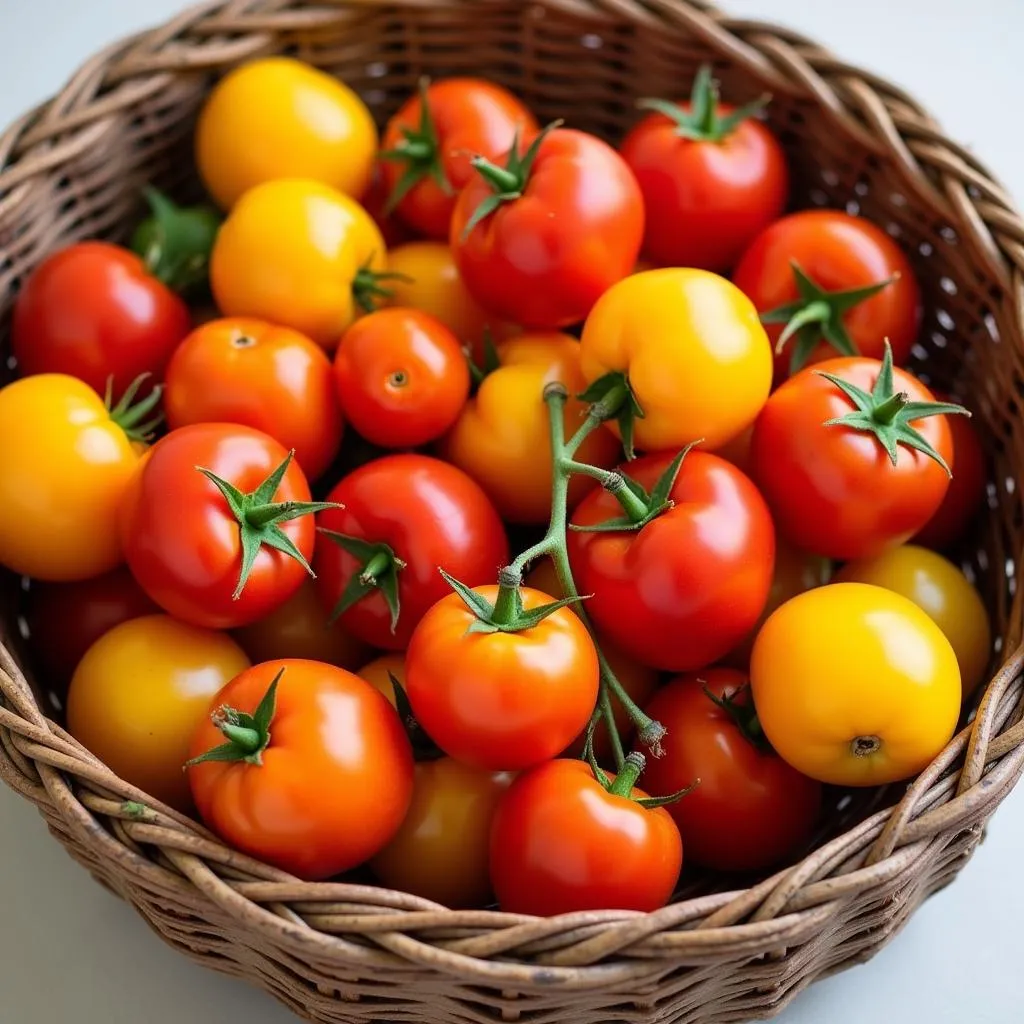The vibrant red of a ripe tomato is a feast for the eyes, instantly recognizable and often associated with flavor and freshness. But is “red” really the only way to describe this color? Let’s delve deeper into the fascinating world of tomato hues and discover the science behind their vibrant shades.
More Than Just Red: Exploring the Spectrum of Tomato Colors
While we often associate tomatoes with a classic red, their color can vary significantly depending on the variety and ripeness. From sunny yellows and deep oranges to vibrant greens and even intriguing purples, the world of tomatoes is bursting with a rainbow of colors.
The Science Behind the Color
The vibrant colors of tomatoes are due to pigments called carotenoids, specifically lycopene and beta-carotene. Lycopene is responsible for the characteristic red hue, while beta-carotene contributes to orange and yellow tones. The concentration of these pigments is influenced by various factors, including:
- Variety: Different tomato varieties have been bred to produce varying levels of lycopene and beta-carotene, resulting in a wide range of colors.
- Ripeness: As tomatoes mature, the concentration of lycopene increases, causing them to transition from green to yellow, orange, and finally, red.
- Growing Conditions: Factors like sunlight exposure, temperature, and soil nutrients can also affect pigment development and ultimately, the color of the tomato.
The Significance of Tomato Color
Beyond aesthetics, the color of a tomato can offer insights into its flavor profile and nutritional value.
Flavor Profiles and Color
While flavor is subjective and influenced by various factors, certain color generalizations can be made:
- Red Tomatoes: Typically associated with a balanced sweet and acidic flavor.
- Yellow Tomatoes: Often described as milder and less acidic, sometimes with a slightly tangy or fruity taste.
- Orange Tomatoes: Offer a blend of sweetness and acidity, often with a hint of citrusy notes.
- Green Tomatoes: Possess a tart and slightly bitter flavor due to the presence of tomatine, a compound that breaks down as the tomato ripens.
 Basket of Colorful Tomatoes
Basket of Colorful Tomatoes
Nutritional Value
The color of a tomato can also be an indicator of its nutritional content:
- Red Tomatoes: Rich in lycopene, a powerful antioxidant linked to various health benefits.
- Orange Tomatoes: Contain a good balance of lycopene and beta-carotene, both of which are beneficial antioxidants.
- Yellow Tomatoes: Higher in beta-carotene, a precursor to vitamin A, which is essential for vision and immune function.
Choosing the Right Tomato Color for Your Needs
With such a vibrant array of colors to choose from, selecting the perfect tomato for your culinary creation can be an enjoyable experience.
- For salads and sandwiches: Classic red tomatoes offer a burst of color and a balanced flavor.
- For salsas and sauces: Consider using a mix of red and yellow tomatoes for a vibrant appearance and a layered flavor profile.
- For roasting and grilling: Orange and yellow tomatoes hold their shape well when cooked and provide a slightly sweeter taste.
- For pickling and relishes: Green tomatoes, with their tartness, are a classic choice for these preparations.
Conclusion
The question “What color is a tomato?” extends beyond a simple answer. The world of tomato colors is a fascinating interplay of science, flavor, and nutrition. Whether you prefer the classic red or enjoy exploring the diverse hues, tomatoes continue to be a versatile and flavorful addition to our plates and a testament to nature’s artistry.

